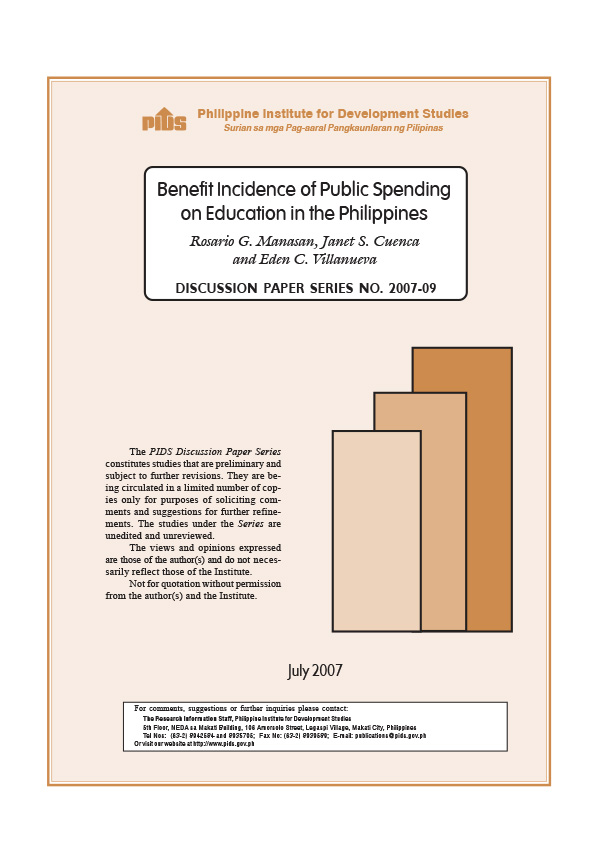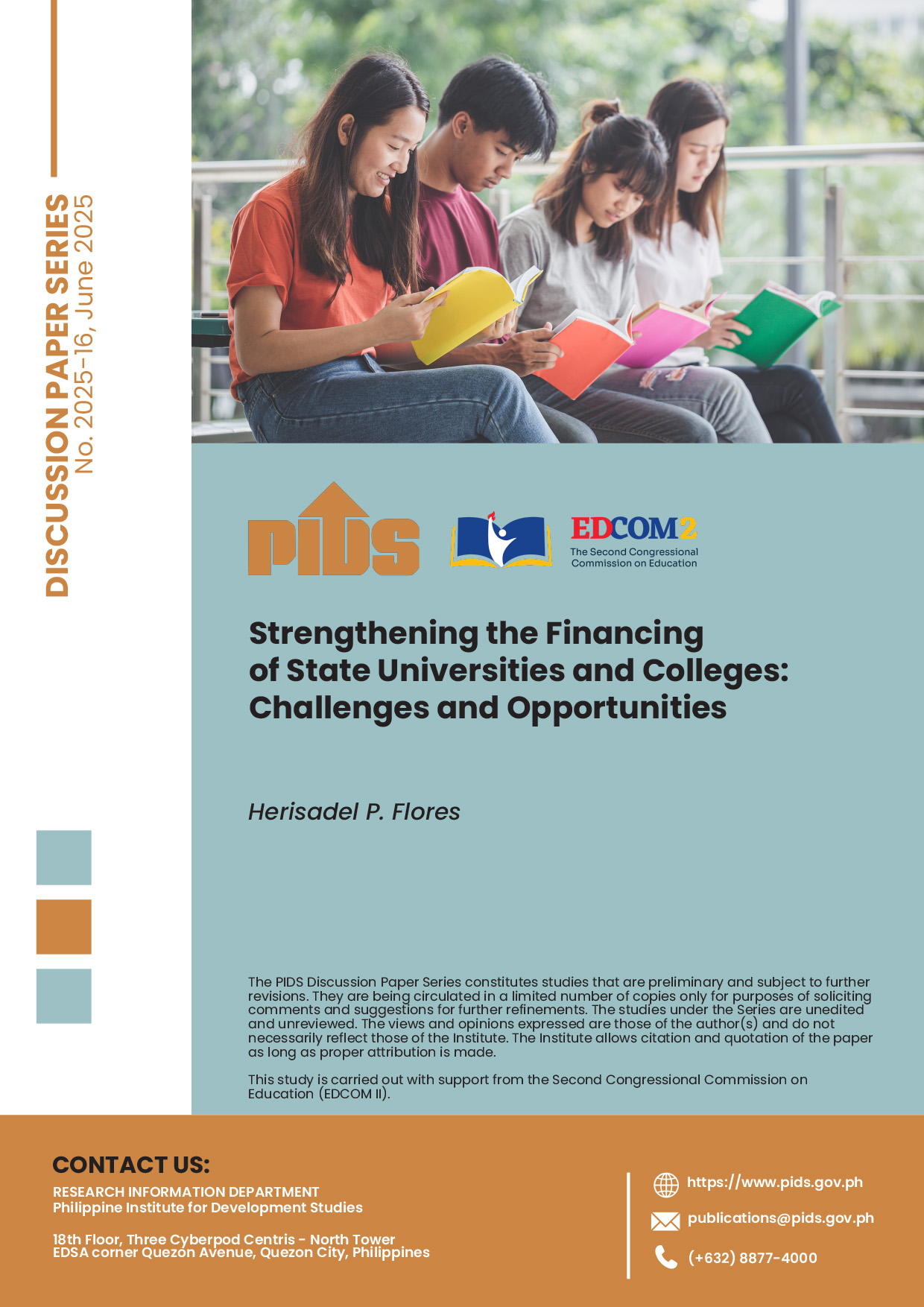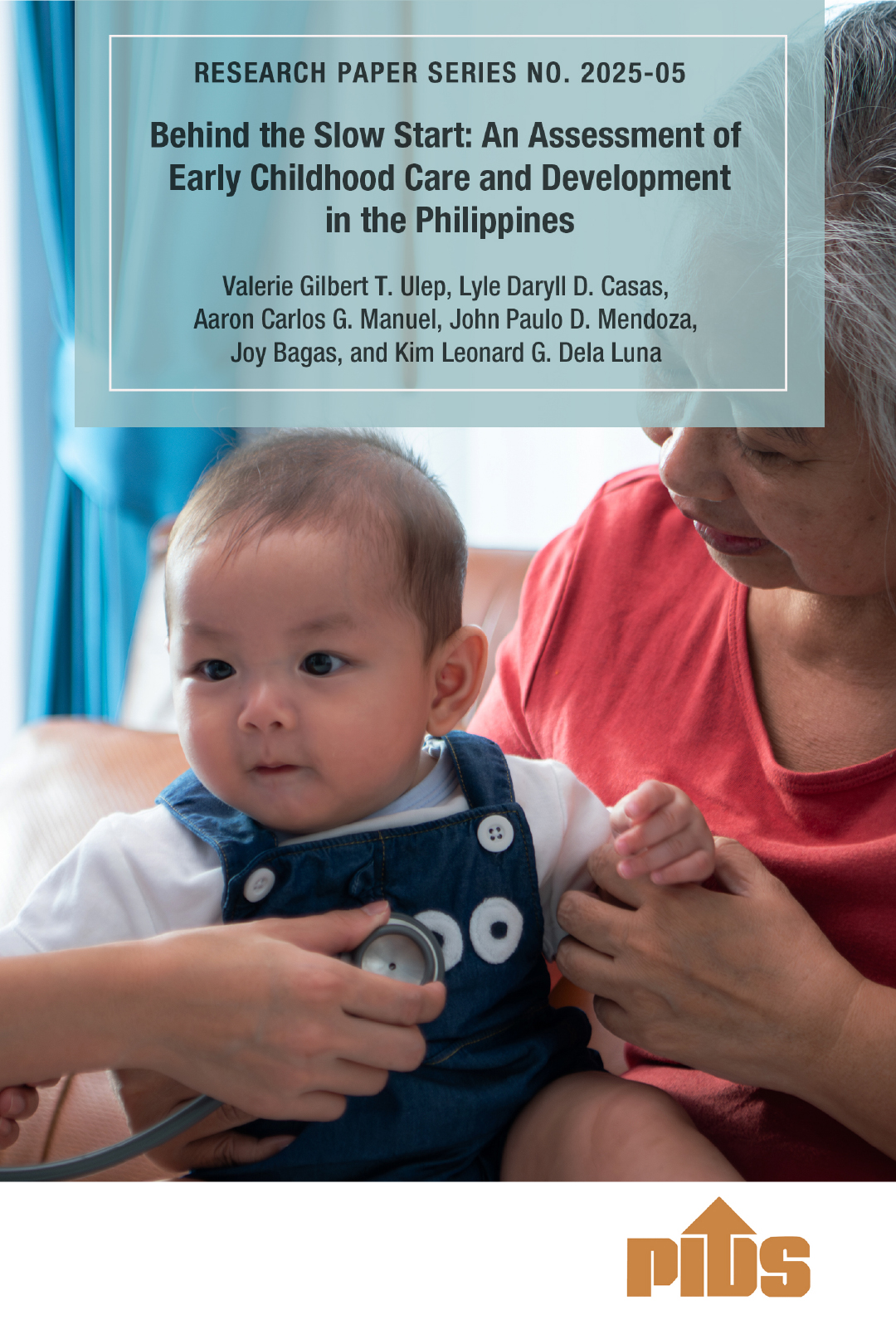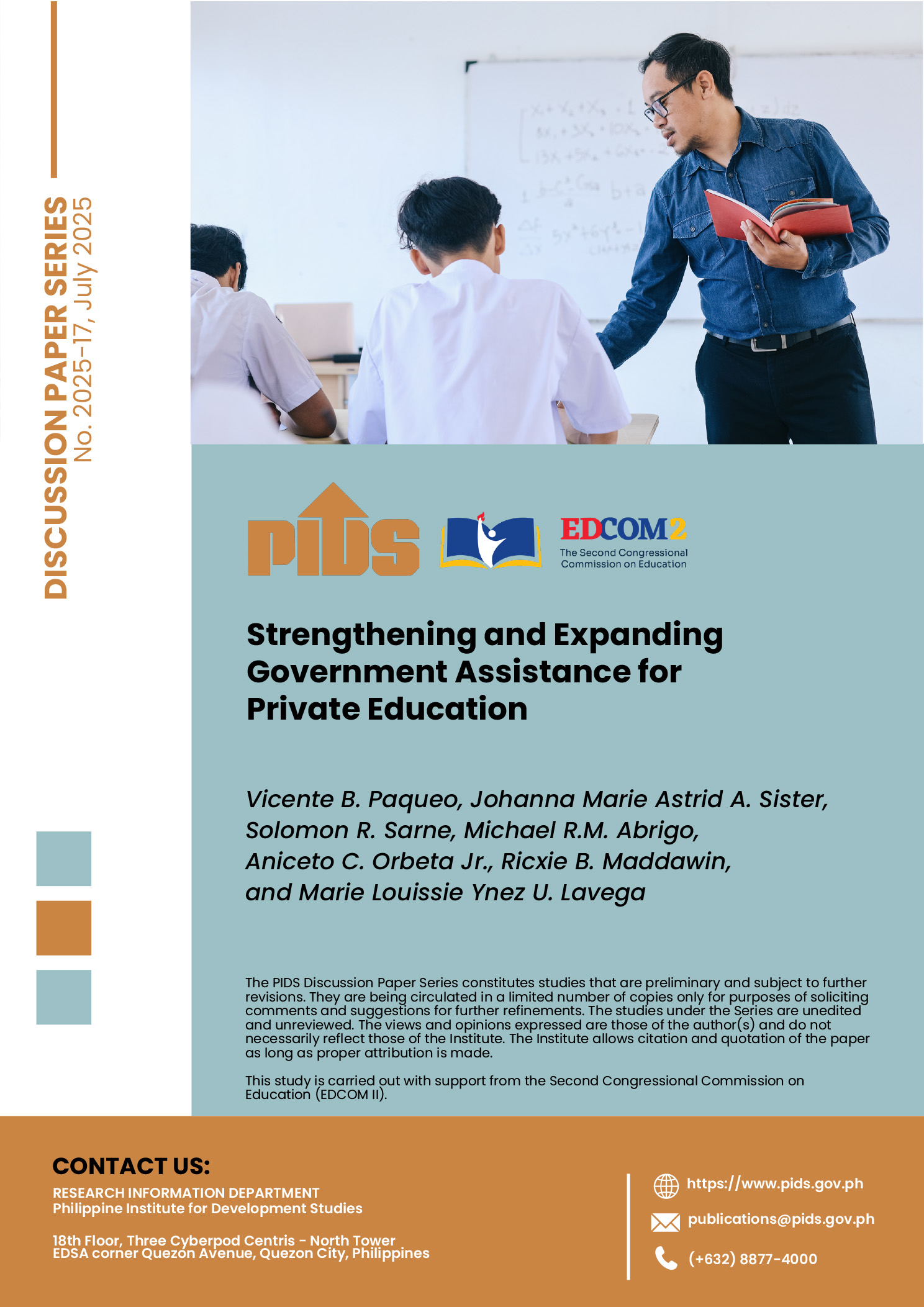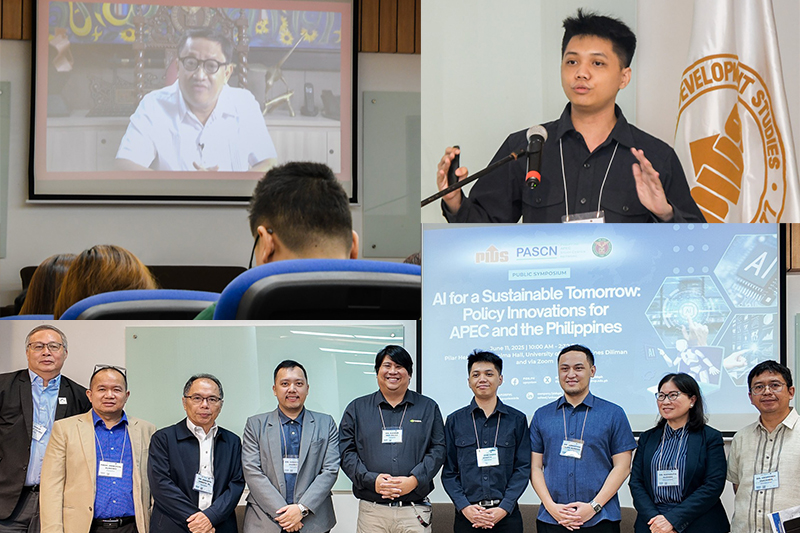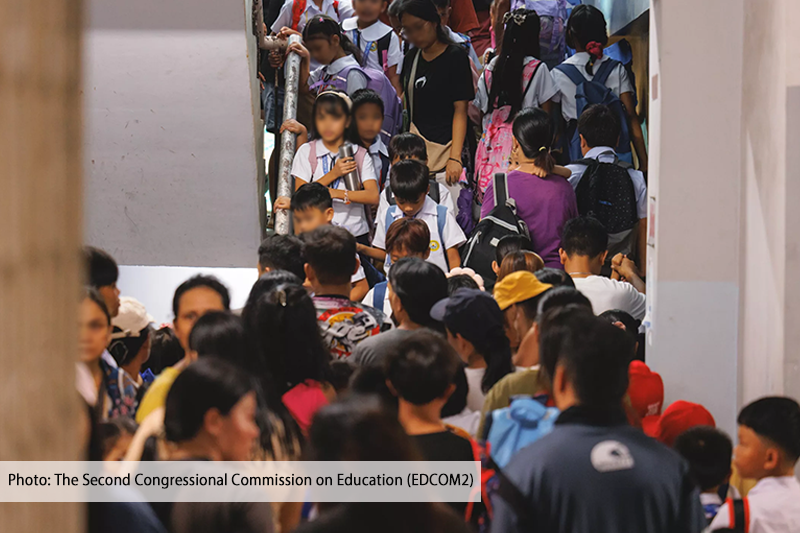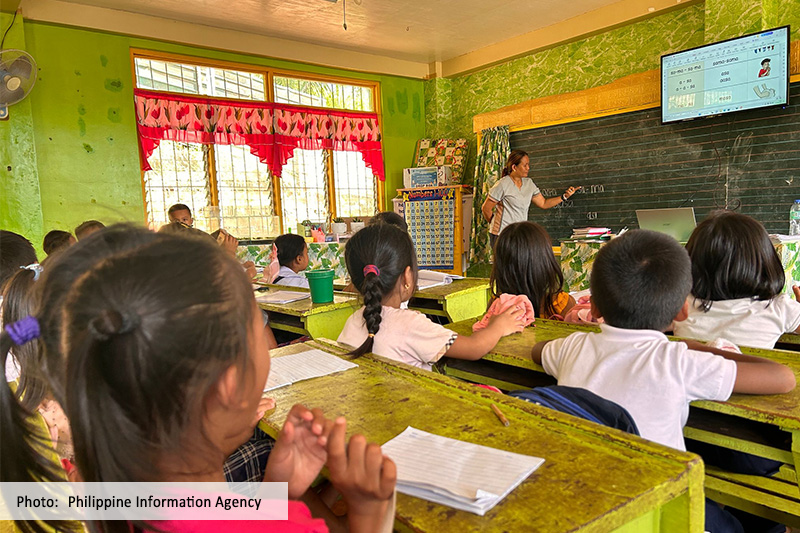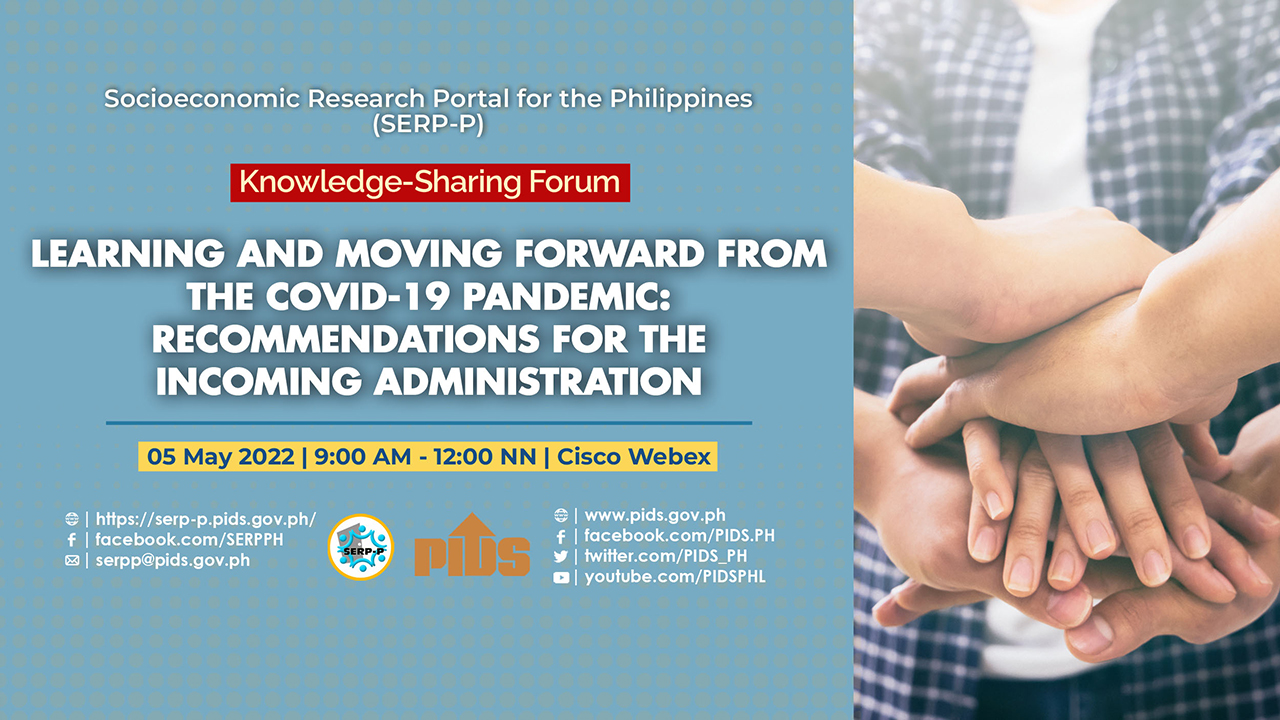Government education spending is expected to improve the well-being of beneficiaries and enhance their capability to earn income in the future. In this sense, directing education expenditures to the poor holds a promise for breaking the intergenerational transmission of poverty. Given this perspective, the paper addresses the question: To what extent has the poor benefited from government spending on education? In particular, it uses benefit incidence analysis to evaluate whether expenditures on education had redistributive impact.
Citations
This publication has been cited 21 times
In other Publications
- Abrigo, Michael R.M., Sang-Hyop Lee, and Donghyun Park. 2017. Human capital spending, inequality, and growth in middle-income Asia. ADB Economics Working Paper Series 529. Asian Development Bank.
- Abrigo, Michael R.M., Sang-Hyop Lee, and Donghyun Park. 2018. Human capital spending, inequality, and growth in middle-income Asia. Emerging Markets Finance and Trade, 54, no. 6, 1285-1303. Taylor & Francis Journals.
- Asghar, Zahid and Mudassar Zahra. 2012. A benefit incidence analysis of public spending on education in Pakistan using PSLM data. Lahore Journal of Economics, 7, no. 2, 111-136 . Department of Economics, The Lahore School of Economics.
- Bhadra, Kaushik K. 2015. Inequality effects of fiscal policy: Analysing the benefit incidence on health sector in India. Working Papers 15/158. National Institute of Public Finance and Policy.
- Bhadra, Kausik K.. 2016. Inequality effects of fiscal policy: Analysing the benefit incidence on health sector in India. Working Papers id:8433. eSocialSciences.
- Bhatka, Runu. 2016. Educational attainment of young adults in India: Measures, trends and determinants. Working Papers id:8435. eSocialSciences.
- Chakraborty, Lekha, Yadawendra Singh, and Jannet Farida Jacob. 2012. Public expenditure benefit incidence on health: selective evidence from India. Working Papers 12/111. National Institute of Public Finance and Policy.
- Chakraborty, Lekha, Yadawendra Singh, and Jannet Jacob. 2012. Public expenditure benefit incidence on health: Selective evidence from India. Working Papers id:5188. eSocialSciences.
- Conchada, Mitzie Irene P. . 2013. The cost efficiency of state universities and colleges in the Philippines. Philippine Review of Economics, 50, no. 2, 83-104 . University of the Philippines School of Economics and Philippine Economic Society.
- Cuenca, Janet S.. 2010. Benefit incidence analysis of public spending on education in the Philippines: A methodological note. Development Economics Working Papers 22627. East Asian Bureau of Economic Research.
- Cuenca, Janet S.. 2008. Benefit incidence analysis of public spending on education in the Philippines: A methodological note. Discussion Papers DP 2008-09. Philippine Institute for Development Studies.
- Cuenca, Janet S.. 2011. Efficiency of state universities and colleges in the Philippines: A data envelopment analysis. Working Papers id:4619. eSocialSciences.
- Cuenca, Janet S. . 2011. Efficiency of state universities and colleges in the Philippines: A data envelopment analysis. Discussion Papers DP 2011-14. Philippine Institute for Development Studies.
- Gabana, Jona and Dennis Madrigal. 2021. A glimpse into the lives of transferring private school students to a state college. TechHub Journal, 20, No. 1, 50-60 . TechHub Research.
- Gabana, Jona J. and Dennis V. Madrigal. 2021. A glimpse into the lives of transferring private school students to a state college. Technium Social Sciences Journal, 20, no. 1, 50-60. Technium Science.
- Manasan, Rosario G. and Janet S. Cuenca. 2008. Who benefits from the Food-for-School program and Tindahan Natin program: Lessons in targeting. Philippine Journal of Development PJD 2007, 34, no. 1 . Philippine Institute for Development Studies.
- Manasan, Rosario G. and Janet S. Cuenca. 2007. Who benefits from The Food-for-School program and Tindahan Natin program: Lessons in targeting. Discussion Papers DP 2007-10. Philippine Institute for Development Studies.
- Niosi, Jorge. 2010. Building national and regional innovation systems. Books, number 14006. Edward Elgar Publishing.
- Olomola, Aderbigbe et. al. 2014. Analysis of agricultural public expenditures in Nigeria: Examination at the federal, state, and local government levels. IFPRI discussion papers 1395. International Food Policy Research Institute (IFPRI).
- Salas, J.M. Ian S. et. al. 2012. Implications of Philippine trends in education financing and projected change in school-age population on education expenditures by income group: Using national transfer accounts results. Discussion Papers DP 2012-34. Philippine Institute for Development Studies.
- Soile, Ismail and Xiaoyi Mu. 2015. Who benefit most from fuel subsidies? Evidence from Nigeria. Energy Policy, 87(C), 314-324. Elsevier.

